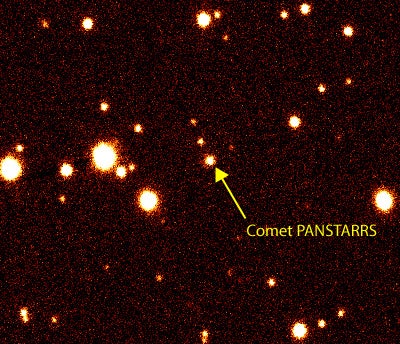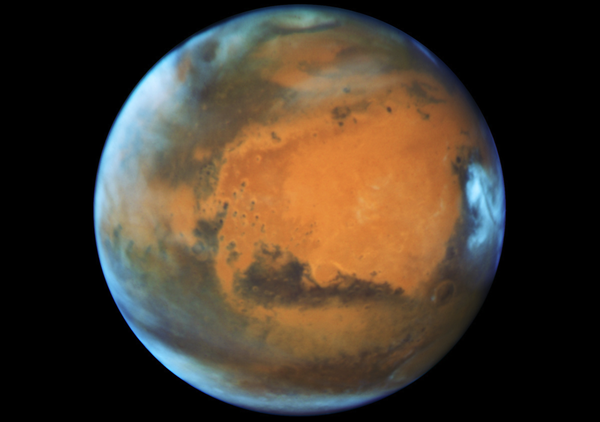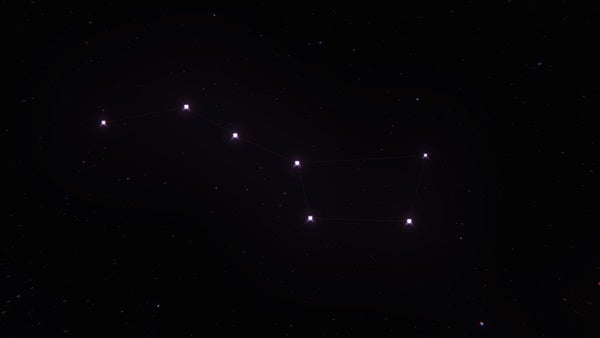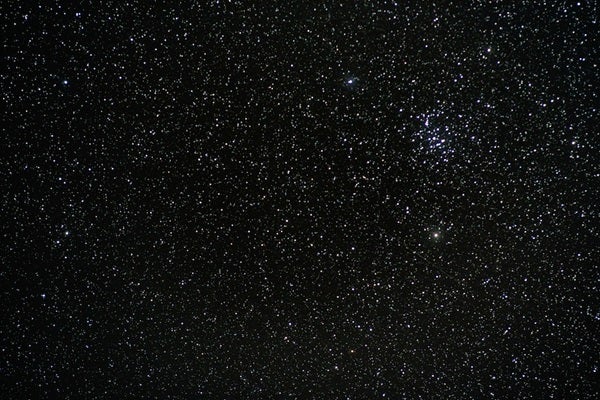Friday, May 20
• Another comet in the growing crowd of such objects discovered by the Pan-STARRS telescope in Hawaii makes its appearance in May’s morning sky. Comet PANSTARRS (C/2013 X1) currently glows around 7th magnitude in eastern Aquarius. (This morning, it lies 1° due west of 4th-magnitude Psi1 [y1] Aquarii.) From most of the United States, you’ll need a clear, flat southeastern horizon to spot the comet through a telescope just before dawn breaks.
Saturday, May 21
• The Moon looks completely illuminated all night as it reaches Full phase at 5:14 p.m. EDT. You can find our satellite rising in the east around sunset and peaking in the south at 1 a.m. local daylight time. The Moon passed 6° due north of Mars during the afternoon hours, and those two form a dramatic quadrilateral with Saturn and the 1st-magnitude star Antares throughout the night.
Sunday, May 22
• Mars lies opposite the Sun in our sky today as it reaches peak visibility for 2016. The Red Planet appears low in the southeast as darkness falls and grows more prominent as the evening wears on and it climbs higher. By 1 a.m. local daylight time, it stands one-third of the way to the zenith in the southern sky against the backdrop of stars in northern Scorpius. The world shines at magnitude –2.1, brighter than it has been since 2005. When viewed through a telescope, the planet’s ocher-colored disk spans 18.4″ and shows subtle dark markings along with a whitish north polar cap. The Red Planet actually will come closest to Earth eight days from now, when its disk will swell to 18.6″ across. For more details on viewing the planet, see “Observe Mars at its best” in the May Astronomy.
• The Moon’s eastward motion relative to the background stars carries it 3° north of Saturn in this evening’s sky.
Monday, May 23
• Neptune rises before 3 a.m. local daylight time this week and appears low in the southeast before dawn. The distant world glows at magnitude 7.9, so you’ll need binoculars or a telescope to spot it. Fortunately, it lies near a brighter star that will help guide you. Look for the planet 0.5° south-southeast of 4th-magnitude Lambda (l) Aquarii. You can confirm a sighting of Neptune through a telescope, which reveals the planet’s 2.3″-diameter disk and blue-gray color.
Tuesday, May 24
• Look high in the northwest after darkness falls this week and you’ll be greeted by the familiar sight of the Big Dipper. The Dipper is the sky’s most conspicuous asterism — a recognizable pattern of stars that doesn’t form a complete constellation shape. It forms the body and tail of Ursa Major the Great Bear. Use the Pointers, the two stars at the end of the Dipper’s bowl, to find Polaris, which lies due north for everyone north of the equator. Polaris marks the end of the Little Dipper’s handle. On evenings in late May, the relatively faint stars of this dipper arc almost directly above Polaris.
Wednesday, May 25
• Brilliant Jupiter appears high in the southwest as darkness falls and remains on display past 2 a.m. local daylight time. The giant planet shines at magnitude –2.1 — tying Mars as the brightest point of light in the night sky — against the backdrop of southern Leo the Lion. Jupiter appears equally dazzling through a telescope, which reveals a wealth of atmospheric detail on a disk that spans 38″. Notice in particular the two parallel dark belts that straddle a bright zone coinciding with the planet’s equator.
Thursday, May 26
• One of the spring sky’s finest deep-sky objects, the Beehive star cluster (M44) in the constellation Cancer the Crab, lies about one-third of the way from the western horizon to the zenith after darkness falls. With naked eyes under a dark sky, you should be able to spot this star group as a faint and fuzzy cloud. But the Beehive explodes into dozens of stars through binoculars or a small telescope at low power.
Friday, May 27
• Although Saturn will reach opposition and peak visibility one week from today, observers will be hard-pressed to see it as inferior this week. The ringed planet rises before 9 p.m. local daylight time and appears highest in the south around 1:30 a.m. Saturn shines at magnitude 0.0 and stands out against the relatively dim background stars of southern Ophiuchus. If you target the beautiful world through a telescope, you’ll see its 18″-diameter disk surrounded by a ring system that spans 42″ and tilts 26° to our line of sight.
Saturday, May 28
• Mars’ westward motion relative to the background stars carries it from Scorpius into Libra today. But for a quick change of pace, grab your binoculars tonight and target Zubenelgenubi (Alpha [a] Librae), the modestly bright star on the constellation’s opposite side. With even the slightest optical aid, Zubenelgenubi resolves into two stars. Nearly 4′ separate the 3rd-magnitude primary from the 5th-magnitude secondary.
See “10 tempting spring binocular targets” in the May issue of Astronomy for other treats visible through binoculars.
Sunday, May 29
• Last Quarter Moon arrives at 8:12 a.m. EDT. It rises around 1:30 a.m. local daylight time and climbs higher in the southeast as dawn approaches. During this period, our half-lit satellite lies near the center of Aquarius the Water-bearer.













